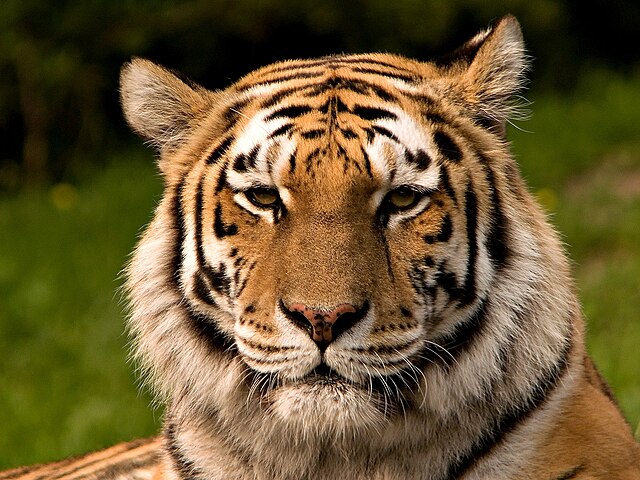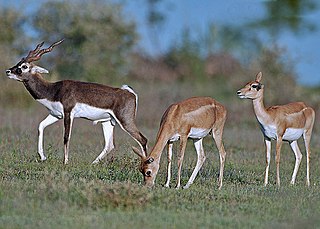Loading AI tools
The Fauna of Asia is incredibly diverse, with the southern tundra of northern Siberia containing reindeer, the taiga forest of Russian Asia being home to small fur-bearing animals, such as sables and foxes. Antelope and rodents including Marmots make their home in the grasslands, tiny musk deer inhabit the mountains of Central Asia. Tigers, which also live in northern Siberia, inhabit the tropical rainforests of South and Southeast Asia. The rainforests are also home to the rhinocerous, monkeys, and several subspecies of elephants.

Several species are also unique to the continent. Orangutans live on Borneo and Sumatra. These apes are the tallest of the ape family after gorillas. The Giant Panda makes its home in southwestern China and snow leopards inhabit the plateaus and mountains of Central Asia. China's Yangtze River is the home of the freshwater Chinese River Dolphin, threatened by water pollution, fishing and larger amounts of motorized river vessels. [1] The largest lizard in the world, the Komodo dragon, lives on a small island in eastern Indonesia.
Many of Asia's species are threatened by extinction from human activity such as agriculture, hunting and forestry, most notably, China's giant panda, Sumatra's rhinocerous, and Southeast Asia's orangutan. [2]

Asia is richer in mammals than any other continent, particulary in carniverous ones. The tundra is a barren, frozen landscape in northern Siberia. Mammals in this area are limited as burrowing animals cannot live there because the tundra subsoil is frozen all year and the tundra is partly free from snow only during the short summer. These factors make conditions for poor. The mammals that do live there include the reindeer, Arctic hare, Arctic fox, and wolf. Most of these animals only live there in the summer and migrate in the Autumn. But other animals, such as lemmings, stay, feeding on the herbage beneath the snow. [3]
Polar bears are found occassionaly along the coasts of the Arctic Ocean and the Pacific oceans, feeding mainly on seals and fish as well as beluga, narwhal, walrus, seabirds, reindeer and carrion. [4]. The tundra's short summer does not allow enough time for the necessary acummulation of food reserves in the body, making hibernation impossible.
The taiga forest is inhabited by a variety of mammal species including bears (both black and brown), wolves, sable, ermine, marten, otters, beavers, lynx, elk, hares, forest reindeer, and several types of squirrels.
The steppes or grasslands of Central Asia are home to many burrowing rodents, such as jerboas, marmots, and pikas, and larger mammals like numerous kinds of antelope and the roebuck. The wild horse, wild donkey, and wild camel all originated here. Wild sheep and goats including the argali and the ovis poli, inhabit the mountains and plateus north of the Himalayas. The wild yak lives in Tibet and is in danger of extinction, but the domesticated yak survives.

Northeastern and eastern China, the Korean peninsula, and Japan are home to several varieties of deer that are endemic to the region. The Chinese and Korean subspecies of the Water Deer live in this region. Chinese water deer live mostly along the Yangtze river while the Korean water deer live in North and South Korea. [5] Originally native to southeastern Siberia, Manchuria, and Korea, the Amur tiger now only lives in a small region along the Russian-Chinese border. The Giant Panda, an endangered species, lives in the mountain forests of Central China, while the Red panda is a much smaller mammal that inhabits the Himalayas.
The Southern region is mostly tropical. The northwestern area of the region is dry, so fauna is mostly confined to areas related to the dry parts of the Ethiopian and Palearctic regions. Monkeys are common and apes are only found in the tropical rainforests, gibbons inhabit of Assam, Myanmar, Indochina, and the Greater Sunda Islands. Orangutans are in danger of extinction and live only on Sumatra and Borneo.
The tiger is found from the Himalayas to Sumatra, but it once was much more plentiful with a much larger range. Leopards live throughout the region, except in Sumatra. There are also a large number of civets and mongoose. The ratel mainly lives in the hilly regions of peninsular India. Jackals and the striped hyena are numerous in India, the striped hyena being confined to the drier parts.
Both flying squirrels and regular ones inhabit the woodlands. The gaur inhabits India and Myanmar and the bateng or the Malayan wild ox lives in Myanmar and south of Borneo and Java but not in Sumatra.

The most common species of antelope in South Asia is the blackbuck. The blackbuck is found open areas and cultivated plains throughout India, Pakistan, and Nepal. The nilgai and the chousingha types of antelope inhabit hilly regions south of the Himalayas. Several species of deer include musk deer that lives in the pine zone of the Kashmir region, Nepal, and Sikkim; the sambar deer that lives almost all over the entire region; and the muntjac or barking deer that's range continues north into southernmost China.
There are several species of the rhinocerous that inhabit Asia. The Indian Rhinoceros is confned to Nepal and Assam; the Sumatran Rhinoceros lives in the forests of Malaysia, southern Sumatra, and northern Borneo; and the Javan Rhinoceros whose population only numbers about sixty. [6] The Indian elephant, a subspecies of the Asian elephant is found throughout the entire region.
The bird life of Asia is varied and includes several rare avian species. The continent is very rich in song birds and East Asia is plentiful of birds of colorful plumage. In the arctic tundra of Siberia

The domestic animals of Asia include the water buffalo, which is harnessed to plows and carts. Cattle are used for hauling, especially in India, the country with the world's largest cattle population. Much of the population of India does not eat beef because most of part of the Hindu religion, which considers cattle sacred. Though considered unclean in Islamic countries, pigs are a major source of protein in China. Sheep are domesticated in the vast steppes of Central Asia and Russian Asia, while reindeer are farmed farther north. The camel is often called the "ship of the desert", and they are used as beasts of burden in the dry areas of the Middle East and the Gobi Desert.
In India and South Asia, elephants are used as beasts of burden as they are much more easily tamed than their African counterpart.[7] Elephants have also been used as beasts of war throughout history as war elephants by the Persian Empire and during Timur's conquests. The zebu is used as a beast of burden and to pull plows or wagons. The yak is also used to plow fields in India, Mongolia, and Tibet as well as in sports such as yak skiing and yak polo.[8] [9] [10]
Wikiwand in your browser!
Seamless Wikipedia browsing. On steroids.
Every time you click a link to Wikipedia, Wiktionary or Wikiquote in your browser's search results, it will show the modern Wikiwand interface.
Wikiwand extension is a five stars, simple, with minimum permission required to keep your browsing private, safe and transparent.